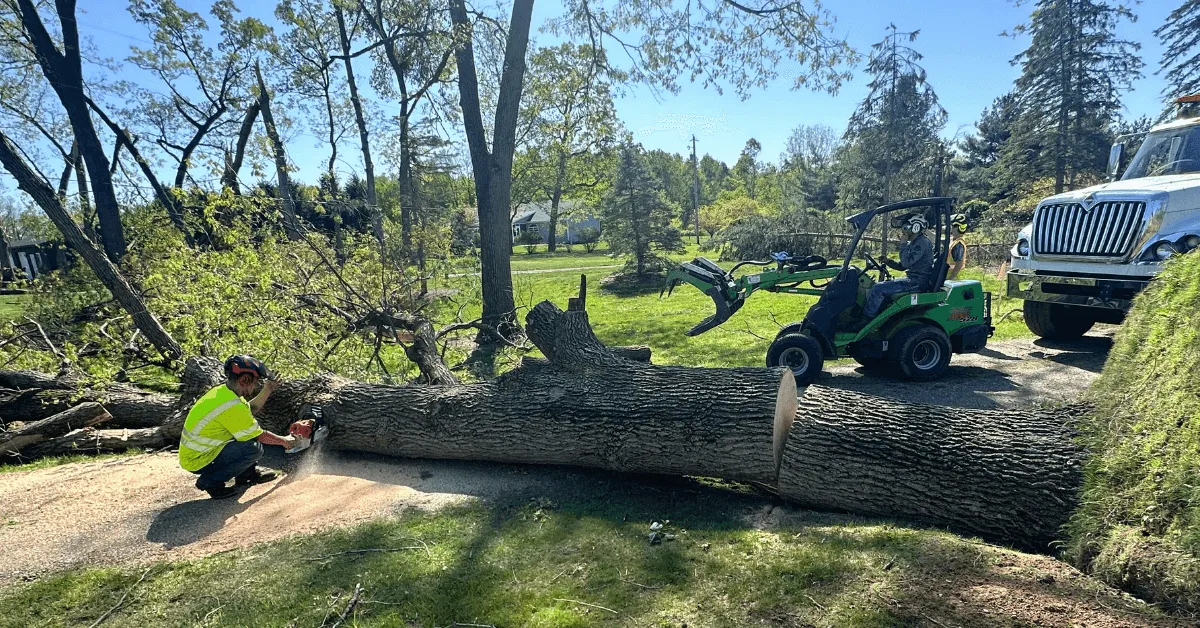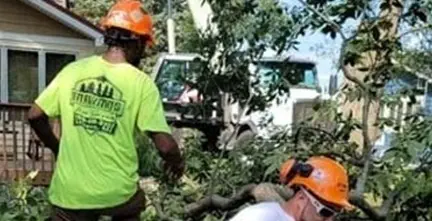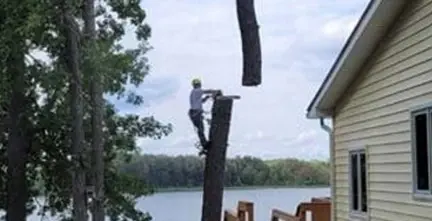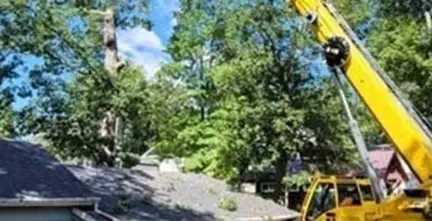A dead or struggling tree isn’t just an eyesore. It can be a serious safety risk. Whether it’s leaning more than it used to or dropping branches without warning, declining trees often give signs before failure. The key is knowing what to look for and how to act.
Tree cutting services aren’t just for after storms. They’re also about preventing costly damage before it happens and protecting your yard’s overall health and safety.
Signs It’s Time to Remove a Tree
Trees usually show signs of decline before failing. If you notice any of the following, it’s worth having a professional take a closer look:
- Branches falling on calm days
- Peeling or missing bark that doesn’t recover
- Fungal growth at the base
- A new lean or visible root lifting
- Hollow or brittle spots when tapped
Seeing more than one of these signs means it’s time to schedule an inspection.
Why Waiting Can Lead to Bigger Problems
Delaying removal might feel like the easy option, but trees weaken over time. One heavy rain, wind gust, or dry spell can cause sudden failure. Risks include:
- Roof and structural damage
- Harm to people or pets
- Uplifted roots damaging pavement or yard
- Insurance complications if neglect is proven
Addressing the issue early helps avoid emergency costs and safety concerns.
What a Tree Cutting Service Should Provide
Professional removal goes beyond cutting and hauling. A quality service should:
- Inspect the site and surrounding space
- Develop a safe plan for removal
- Use safety gear and equipment
- Take the tree down in sections if needed
- Haul away debris and leave the area clean
A reputable team will explain their process and answer your questions clearly.
Clearing Up Common Misconceptions
| Belief | Reality |
|---|---|
| Dead trees only fall during storms | Many collapse during calm weather due to internal decay |
| DIY saves money | One mistake can lead to costly repairs |
| Small trees aren’t dangerous | Even small trees can damage property if poorly placed |
Choosing a Reliable Tree Cutting Company
Ask the right questions before hiring:
- Are you licensed and insured?
- Will your crew perform the work or will it be subcontracted?
- Is cleanup included?
- How do you handle unexpected complications?
If a company avoids clear answers, it’s a red flag. A professional crew will walk you through everything upfront.
After the Tree Is Gone: What Changes
Most homeowners notice immediate benefits after removing a problem tree:
- More natural light in the yard
- Healthier surrounding plants
- Fewer obstacles during mowing or landscaping
- Less stress during storms
Removing a dead or dying tree often leads to a more open and livable yard.
Seasonal Weather Can Make Problems Worse
Even if a tree makes it through winter, it may struggle in spring or summer. Look out for:
- Soil shifting after heavy rain
- High winds causing movement in weak trunks
- Temperature swings stressing older trees
If a tree has looked off for a while, don’t wait for the next storm to confirm your suspicion.
Quick Tree Check: A 10-Minute Walkthrough
Walk your property slowly and look for:
- Leaning trees near structures
- Uneven or missing leaf growth
- Roots lifting concrete or soil
- Unnatural movement during wind
You don’t need to be an expert to spot when something doesn’t seem right. Trust your instincts.
What Happens After Tree Cutting
You’ll typically have the option to:
- Grind the stump for a clean look and future planting
- Leave it as a garden edge
- Replant in the cleared space
- Keep the space open for better light and air circulation
Tree removal isn’t just about clearing a hazard. It also opens up new options for your yard.
You Don’t Need to Know Everything – Just When to Ask
You don’t need to identify tree species or diagnose disease. If something looks different, feels off, or keeps catching your attention, that’s reason enough to ask an expert.
That tree you’ve been unsure about? That’s your signal to take the next step.
Need a tree gone?
Learn more about our tree removal services in Kalamazoo here.
Long-Term Tree Health Tips
Avoid major problems with a few simple habits:
- Give trees room to grow without crowding
- Water during long dry spells
- Prune carefully to prevent branch rubbing
- Watch for fungus, insects, or soft bark at the base
A little attention throughout the year goes a long way toward keeping your trees healthy and safe.
Frequently Asked Questions About Tree Cutting
How do I know if my tree is dead or just stressed?
Scratch a small twig. If it’s green underneath, it may be alive. If it’s dry, brittle, and the tree isn’t growing leaves in season, it’s likely declining or dead.
Do I need a permit to remove a tree?
It depends on your city or township. Some areas have rules for tree removal, especially near roads or shared spaces.
Is winter better for removal?
Winter can be easier since the ground is firm and trees are dormant. But if a tree is hazardous, don’t wait.
Can tree removal damage my yard?
Professional crews use ground protection and controlled techniques to avoid damage. Be sure to ask about their process.
Final Thoughts
Tree issues rarely announce themselves with crashing sounds. More often, they show quiet signs, a shifting lean, peeling bark, or patches where nothing grows. These details matter. If something in your yard feels off, taking action isn’t overreacting, it’s responsible.
Take a moment to walk your yard, trust what you see, and ask questions. And if it’s time, reach out to a trusted tree cutting service in Kalamazoo like Brawner’s Tree Service. It could be the most important step you take to protect your home and peace of mind.




